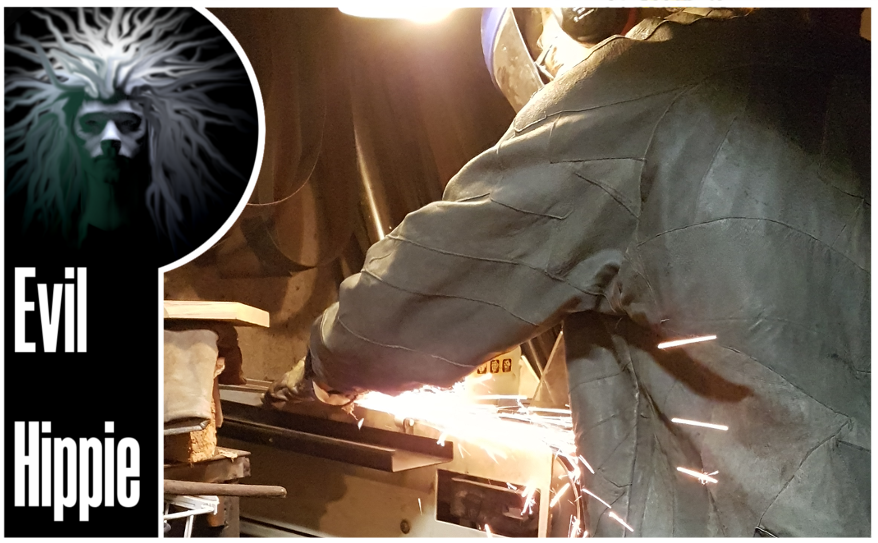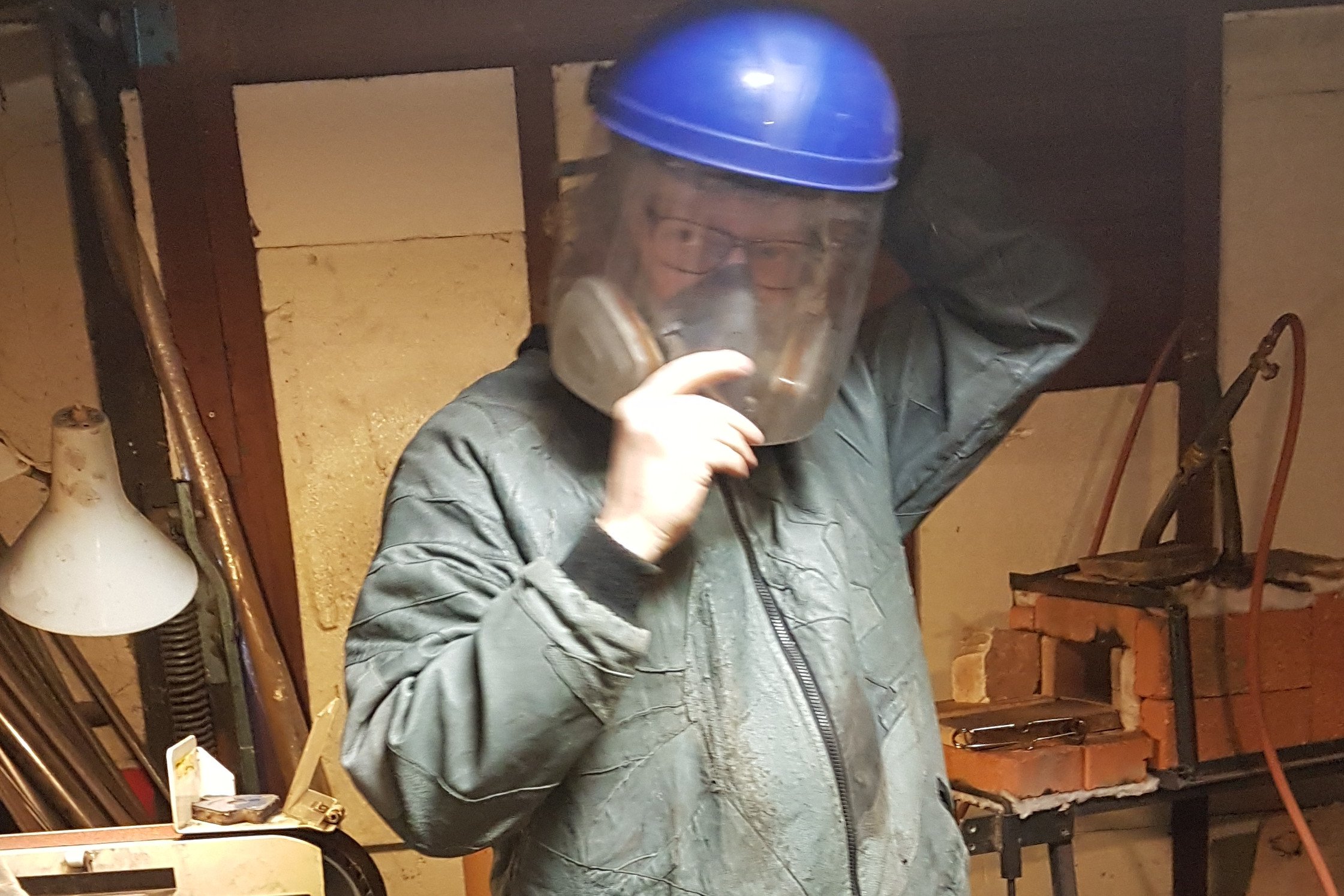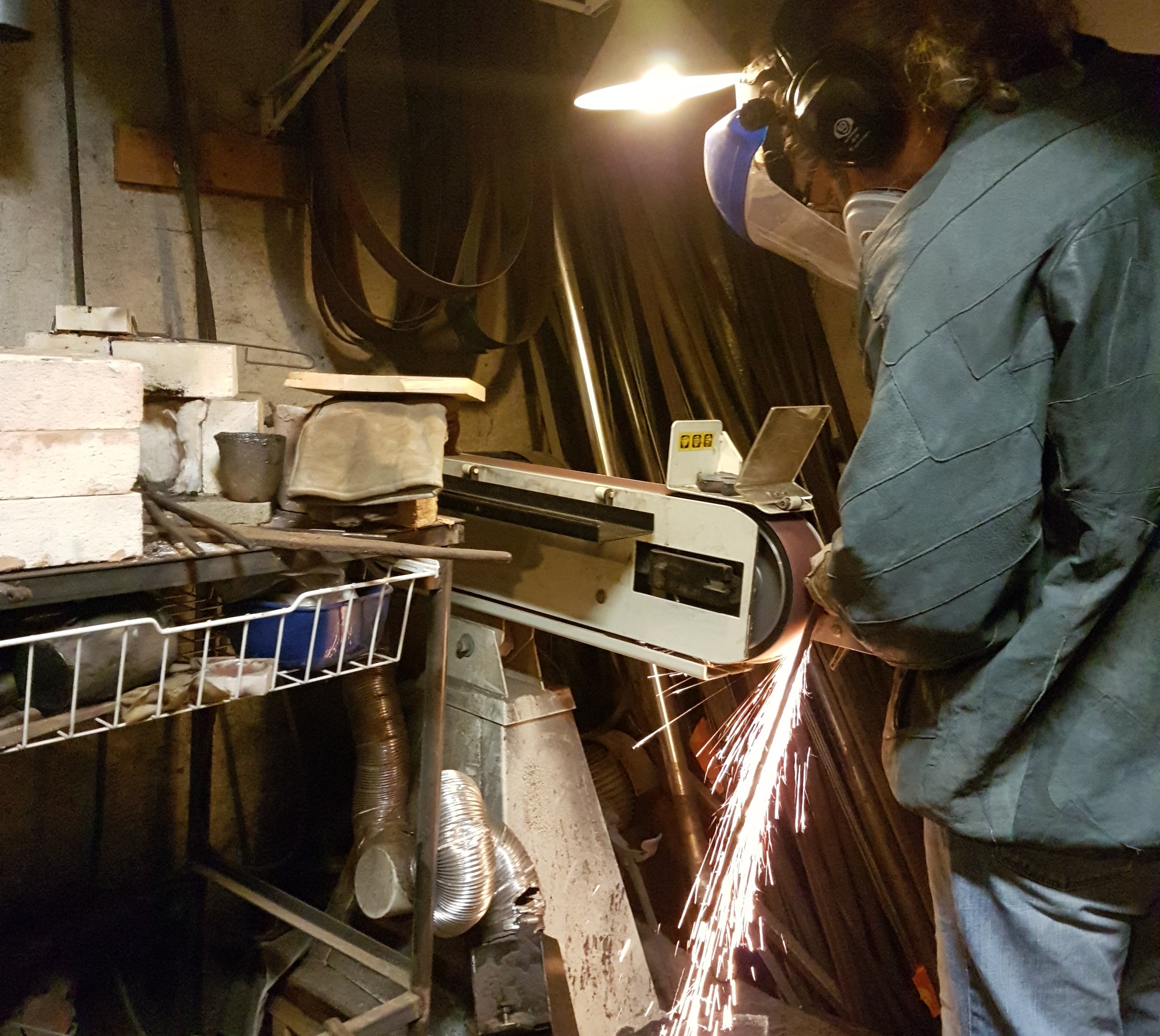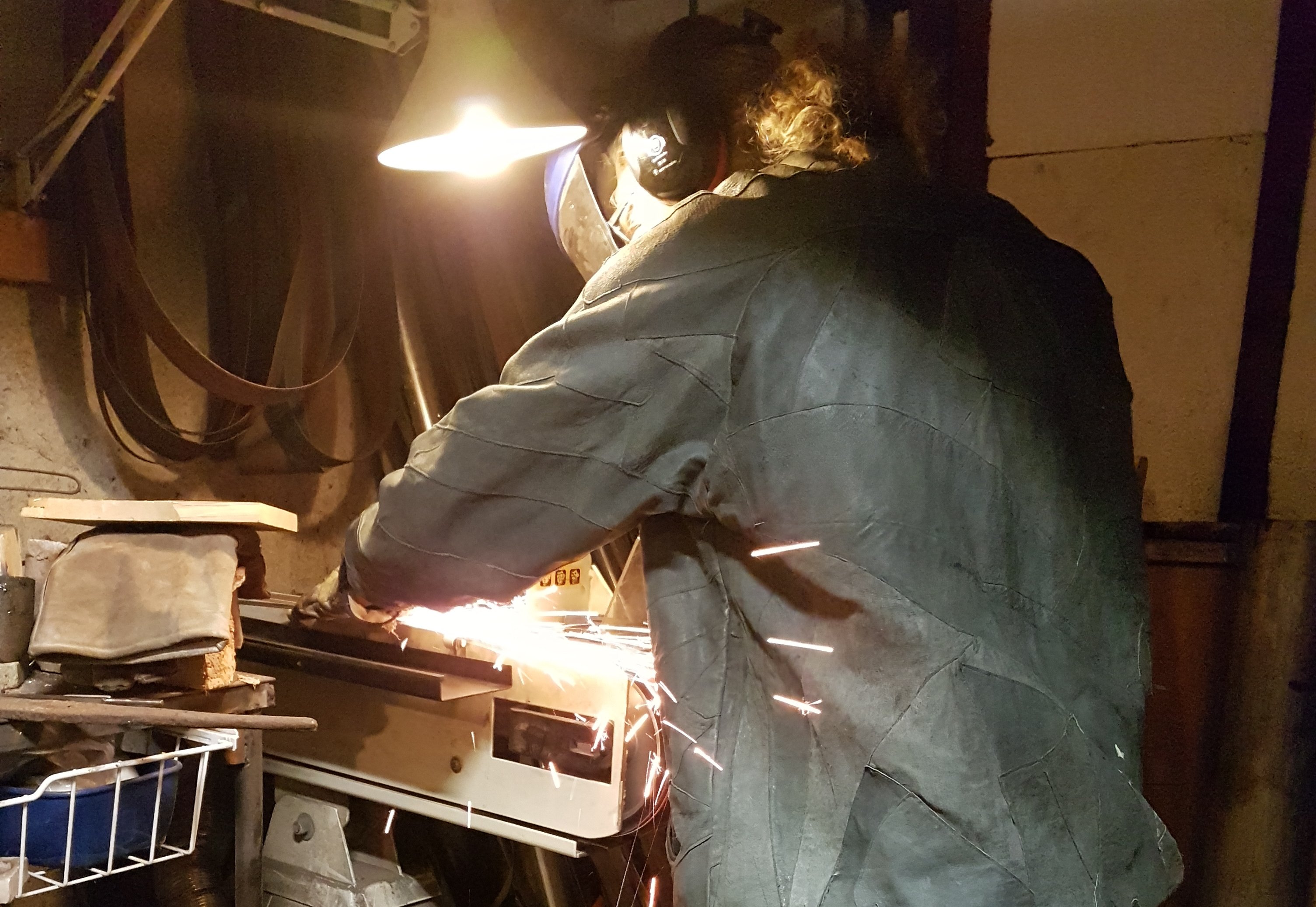Swordmaking is not only complicated, it is also time consuming and fraught with risks, both in the sense that you may harm yourself during the process, but also because a small error at a critical point in the process will probably destroy your work.

So to make swords you will have to be both patient, careful, skilled at every part of the process , and knowledgeable about the tools and materials that you work with.
Grinding is Arguably my least favorite thing about working with metals.
It is dirty and noisy(even more so , than the other noisy and dirty metalworking) It is also amongst the most dangerous, because sparks (and sometimes metal pieces) fly around you, and then it is actually quite boring.

First I need to wear a lot of protective equipment. The mask will filter out all the little burned steel- and carbon-particles so they dont get in my lungs.
This is always the case but even more important when working with highly alloyed steels since they may also contain things like molybdenum, tungsten or chrome or whatnot.
I am no expert in these things but I reckon: Better safe than sorry with stuff like that.

the face shield protects my face against the flying sparks, and if I should drop something during work and have it thrown at me from the grinder.
Finally I can actually begin grinding. I grind both before and after heat treating.
Before heat treat, I do it to clean up the lines and make sure there is a consistent Thickness to the piece(to minimize warping during the quench). After heat treat, I do the final grinding and polishing.
On a sharp sword or on a knife. This is to establish the edge and to get a nice shiny surface. On a blunt sword, it is only for the surface.
I start with a very coarse belt, usually around 40 or 60 grit. Then 80 , 120 and 240. For swords I don't go any further than that. I just finish it off with a 3M belt that give a very nice silky surface that is fairly rust-resistant.
For knives and more elaborate swords I would then go to hand polishing up to around 1000 grit. you can go even furhter but I am a lazy bastard so if I want mirror finish I would use a buffing wheel for the finish.

During grinding The metal will heat up very quickly due to the friction. The fine grits produce more heat while the coarse ones produce less.
This is a bit of a pain when grinding after heat treat, because I run a very real risk of ruining my hardening. When the edge gets thin it gets even worse, because there is less material to soak up the heat.
The Heat buildup also means that I get my fingers burned constantly if i am not careful. For the sake of my fingers and to not ruin the tempering, I have a big water-container, right next to me, so I can cool of the piece all the time.
It is actually the same water container that I use for the quench. It is a piece of 15cm diameter stainless steel pipe, that I have plugged in one end.
Apart from the blisters from the heat, the main danger is that the grinding belt will chew through the glove and take a chunk of skin off my finger. This happens rarely because I have a lot of experience, and I am careful, but it does happen every once in a while and it hurts like hell.

You may have noticed that I am not overly fond of grinding, but it does have its charms nonetheless. It can sometimes have an almost meditative character, because you concentrate on something that is very simple, but still wont allow your thoughts to wander.
It is also the time when a knife or a sword takes on its final shape and finish, and that is extremely satisfying.

Im EvilHippie, a compulsive creative and jack o' trades. If you want to know more about me, check out my introduction post here
If you like what you see, feel free to upvote, follow and resteem
or you can check out these recent posts
a male figure 3dmodel
the forging of the steel
a drawing
unwarping blades
